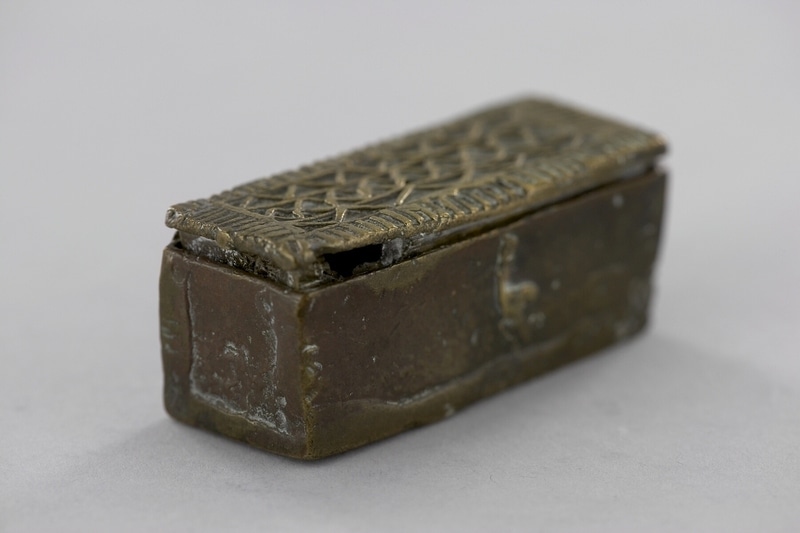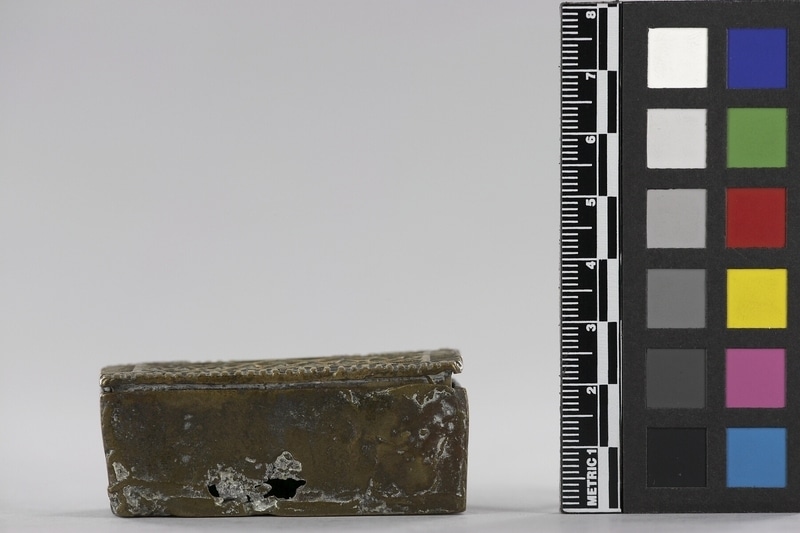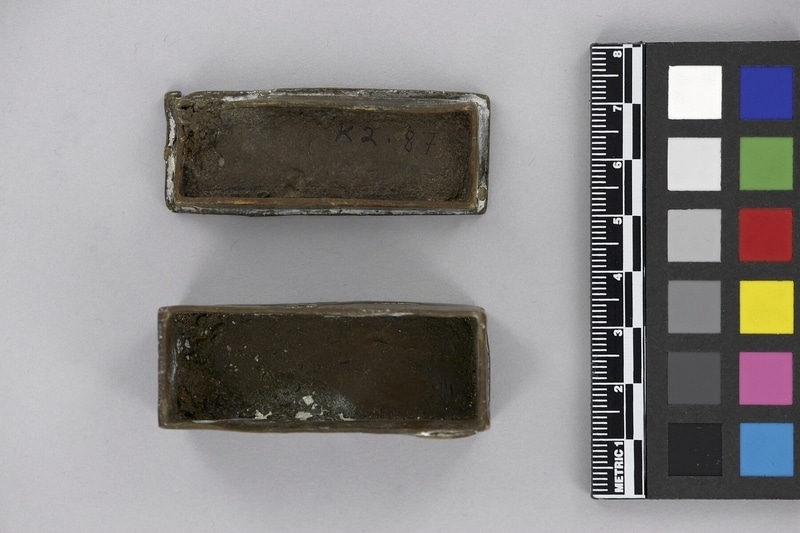Gold Dust Box Item Number: K2.87 a-b from the MOA: University of British Columbia



Description
Rectangular metal box with a separate lid, with overall geometric designs in relief. The box (part a) is plain. The lid (part b) has vertical bands of zig zags bordered by lines that are perpendicular to their respective edges.
History Of Use
Used to hold powdered gold (gold dust). Historically made and used by the Akan peoples to hold powdered gold, which was used as the standard currency from the seventeenth to mid-nineteenth centuries.
Specific Techniques
Cast using the lost-wax technique ("cire perdue"). Akan/Asante brass-casters achieved works of great technical virtuosity by use of the lost wax process. A wax model was made and given several coats of a fine clay paste mixed with ground charcoal. A number of thin wax rods were attached to the wax model, which enabled holes to be formed through which the metal would be poured. After several coatings giving a thickness of between 3-6 mm had been applied, an outer layer of clay was carefully built-up around it and left until dry. The mould was heated and the molten wax tipped-out. A small clay cup containing the metal was sealed tightly against the hole leading to the inside of the mould. The mould and cup were then returned to the furnace and heated until the metal was molten. Tongs were used to quickly invert the mould so it was filled with the molten metal. The mould was then removed from the furnace and allowed to stand until it had cooled and the metal solidified. Lastly, it was broken open and the casting cleaned.
Item History
- Made in Ghana
- Owned by Berkeley Galleries Ltd. before March 1960
- Received from Berkeley Galleries Ltd. (Seller) and Leon & Thea Koerner Foundation (Funding source) during March 1960
What
- Name
- Gold Dust Box
- Identification Number
- K2.87 a-b
- Type of Item
- box
- Material
- bronze metal
- Manufacturing Technique
- cast
- Overall
- height 2.5 cm, width 5.2 cm, depth 2.4 cm
- Part A
- height 2.4 cm, width 5.2 cm, depth 2.4 cm
- Part B
- height 1.0 cm, width 5.2 cm, depth 2.4 cm
Who
- Culture
- Akan and Asante
- Previous Owner
- Berkeley Galleries Ltd.
- Received from
- Berkeley Galleries Ltd. (Seller) and Leon & Thea Koerner Foundation (Funding source)
Where
- Holding Institution
- MOA: University of British Columbia
- Made in
- Ghana
When
- Ownership Date
- before March 1960
- Acquisition Date
- during March 1960
Other
- Item Classes
- metalwork
- Condition
- poor
- Current Location
- Case 101
- Accession Number
- 0023/0010 a-b